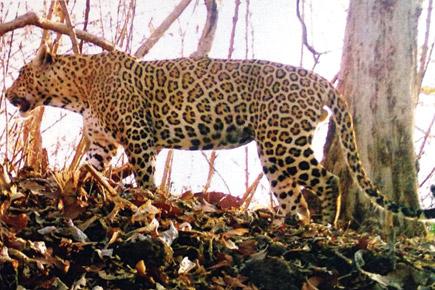Tadoba has Gabbar and Ranthambhore has Machchli. Now, officials at the Sanjay Gandhi National Park have released a booklet listing photos and identities of Mumbai's 35 leopards

leopard
In tiger reserves, national parks and wildlife sanctuaries across India, tigers enjoy quirky names and a celebrity status among tourists. These include Ustad (T-24) from Ranthambore National Park, Gabbar from Tadoba and Jay from Umred Karhandla Wildlife Sanctuary. Following in their footsteps, Sanjay Gandhi National Park (SGNP) officials have released a booklet naming 35 leopards inspired by their behavior and appearance. The step was taken to spread awareness about the animal that’s an integral part of Mumbai’s landscape.
Also read: Mumbai tourism boost - SGNP may soon get a leopard safari
ADVERTISEMENT

Taad likes roaming around taad trees; while Bhootiya (above right) avoids cameras
Inspiration
A study originally conducted to find out the ecology of leopards in SGNP motivated the authorities to compile a booklet. Also, they hope that the pictures they collected from the study will help identify individual leopards in cases of poaching and animal attacks. The study, titled Ecology of leopards in SGNP with special reference to its abundance, prey selection and food habits, was conducted between December 2014 and June 2015 by researcher Nikit Surve from Wildlife Institute of India under the supervision of Dr S. Sathyakumar, Dr K Sankar and Dr Vidya Athreya. Released in June, the report stated that the population of leopard in SGNP per 100 sq/km is 21 and the number of leopards there, in Aarey and other areas total to 35. “SGNP is a unique forest in itself since it is within the limits of a metro. Plus, the images we gathered from the cameras were really beautiful. Each of the leopards was given a unique name based on its appearance and behavior,” said Santosh Saste, assistant conservator of the forest.
Also read: Mumbai has 35 leopards in the wild, claims recent study
About the book
Currently being released only for the national park authorities, the book will soon be made available to public. The cover photograph is of a city leopard with the Mumbai landscape in the background. The leopards’ names range from Mastikhor, which means mischievous, Gabru Jawan, which means healthy youngster, to Big Daddy, who is one of the biggest leopards in SGNP, Rose and many more. “It is difficult to identify the animal when people are attacked because more than one leopard crosses the same path the same night. But now, we can install camera traps in the area and match the fresh images with the booklet based on the rosette patterns,” said a senior forest official. “If the forest department or police officials catch poachers with leopard skin, we will be in the position to identify the animal,” he added.
 Subscribe today by clicking the link and stay updated with the latest news!" Click here!
Subscribe today by clicking the link and stay updated with the latest news!" Click here!







